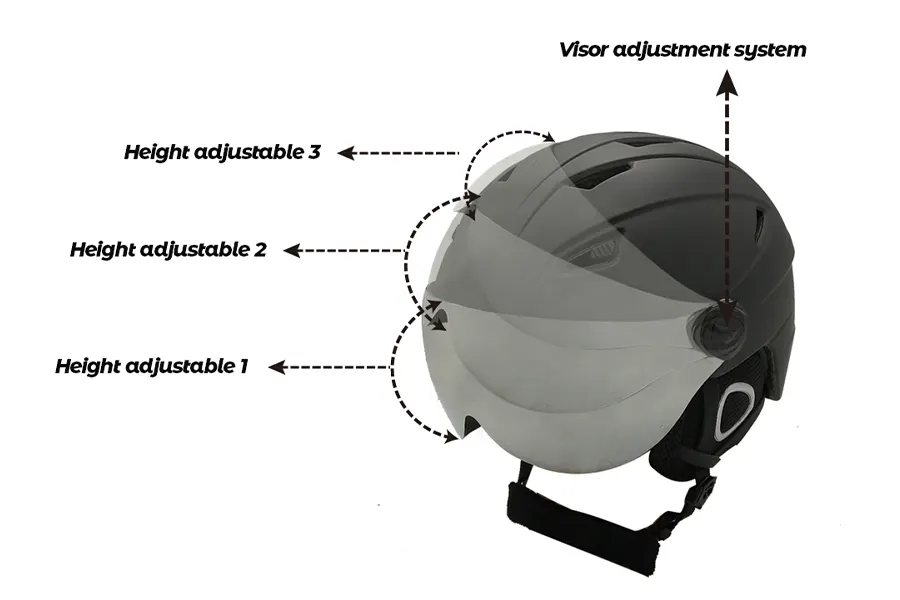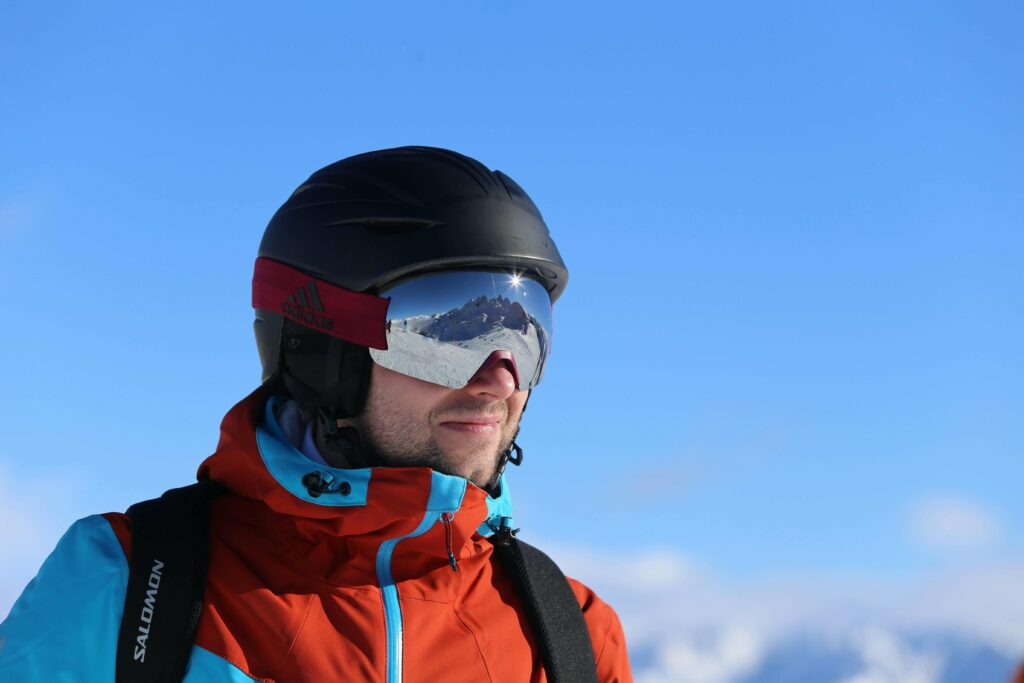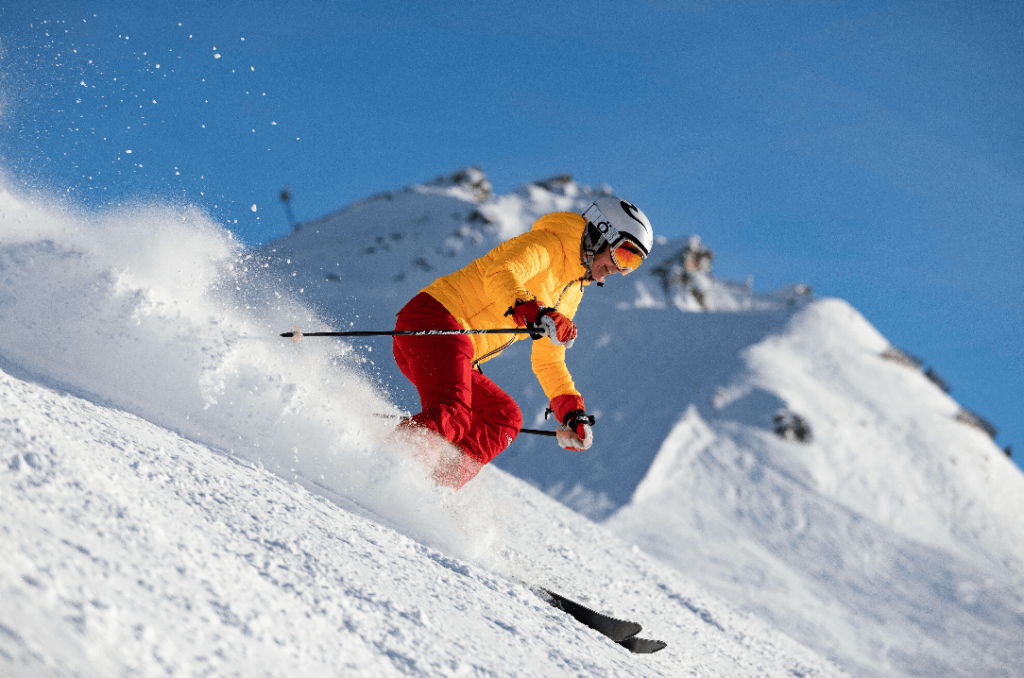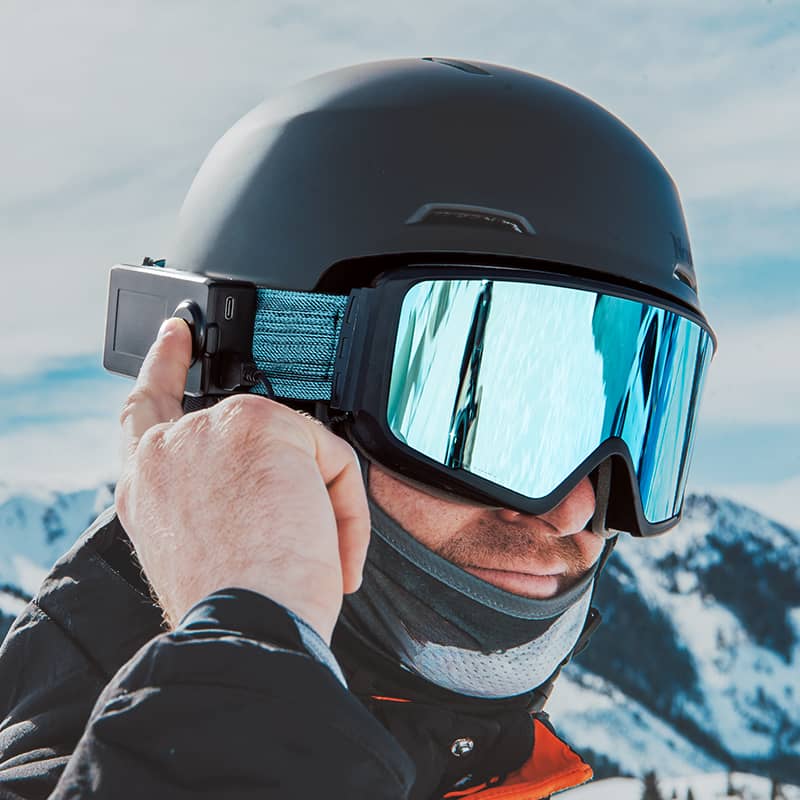Organizzare una vacanza sugli sci o sullo snowboard può essere un'esperienza entusiasmante, ma garantire la propria sicurezza sulle piste dovrebbe sempre essere una priorità assoluta. Un elemento essenziale dell'attrezzatura che ogni appassionato di sport invernali dovrebbe avere è un casco da sci o snowboard di qualità. In questo articolo, esploreremo i fattori chiave da considerare nella scelta del casco perfetto per le tue avventure invernali.
Serve il casco per fare snowboard?

La risposta breve è sì, hai assolutamente bisogno di un casco per lo snowboard. Mentre alcuni potrebbero sostenere che i caschi non siano alla moda o necessari, la realtà è che indossarne uno può prevenire gravi lesioni alla testa in caso di caduta o collisione sulle piste. Sebbene non sia obbligatorio per legge indossare il casco da sci durante lo sci o lo snowboard, è altamente raccomandato per la vostra sicurezza. Proteggere la testa dovrebbe essere imprescindibile quando si pratica uno sport ad alta velocità come lo snowboard.
Tipi comuni di caschi da sci o snowboard

Caschi rigidi
I caschi rigidi sono il tipo tradizionale di casco da sci o snowboard, con una calotta esterna robusta realizzata in materiali resistenti come il policarbonato o la plastica ABS. Questi caschi offrono una solida protezione dagli urti e sono perfetti per principianti o sciatori occasionali.
Caschi in-mold
I caschi in-mold sono realizzati fondendo la calotta esterna con lo strato interno in schiuma durante il processo di produzione. Questo si traduce in un casco più leggero e aerodinamico, che offre protezione e comfort eccellenti. I caschi in-mold sono popolari tra sciatori e snowboarder esperti.
Caschi ibridi
I caschi ibridi combinano il meglio delle tecnologie hard-shell e in-mold. Sono dotati di una calotta esterna robusta per la resistenza agli urti e di uno strato interno in schiuma per l'assorbimento degli urti. I caschi ibridi offrono una protezione superiore pur rimanendo leggeri e comodi per un'intera giornata sulle piste.
Materiali di costruzione per caschi da sci o snowboard
Policarbonato
Il policarbonato è un materiale leggero e resistente, comunemente utilizzato nei caschi da sci e snowboard. Offre un'eccellente resistenza agli urti e alla rottura, rendendolo ideale per proteggere la testa durante le attività ad alta velocità.
Plastica ABS
La plastica ABS è un altro materiale popolare per i caschi da sci e snowboard grazie alla sua robustezza e durata. I caschi realizzati in plastica ABS sono affidabili e possono resistere a urti e impatti multipli senza compromettere la sicurezza.
Schiuma EPS
La schiuma EPS, abbreviazione di polistirene espanso (EPS), è il materiale antiurto più comunemente utilizzato nei caschi da sci e snowboard. Offre un'eccellente ammortizzazione e un elevato assorbimento dell'energia, riducendo il rischio di lesioni alla testa in caso di incidente.
Tecnologia Mips
MIPS, acronimo di Multi-Directional Impact Protection System, è una tecnologia rivoluzionaria progettata per ridurre le forze rotazionali sul cervello durante un impatto. I caschi dotati di tecnologia MIPS offrono una maggiore sicurezza, fornendo un ulteriore livello di protezione contro le commozioni cerebrali.
Misure e vestibilità dei caschi da sci o snowboard
Come scegliere la taglia del casco da sci?
Quando si seleziona un casco da sci o da snowboard, è fondamentale trovare la taglia giusta per la propria testa. Misurare la circonferenza della testa con un metro a nastro e consultare la tabella delle taglie del produttore dell'attrezzatura da sci per determinare la taglia corretta del casco per una calzata aderente e sicura.
Provare diversi caschi per trovare la vestibilità migliore
Prova diversi caschi per trovare la calzata più comoda e sicura. Assicurati che il casco sia ben aderente alla testa, coprendo la parte superiore della fronte senza ostacolare la visuale. Regola le cinghie e l'imbottitura secondo necessità per garantire una calzata personalizzata.
Garantire una vestibilità aderente ma confortevole
Un casco della misura giusta dovrebbe essere aderente ma non stretto sulla testa. Non dovrebbe muoversi o spostarsi quando si scuote la testa, ma non dovrebbe nemmeno causare fastidio o punti di pressione. Trovare il perfetto equilibrio tra vestibilità e comfort è essenziale per la sicurezza e il divertimento sulle piste.
Caratteristiche di sicurezza da considerare
Protezione dagli impatti
Cerca caschi con caratteristiche avanzate di protezione dagli impatti, come strati multipli, calotte rinforzate e materiali integrati per l'assorbimento degli urti. Queste caratteristiche possono ridurre significativamente il rischio di lesioni alla testa in caso di incidente o collisione.
Sistemi di regolazione della vestibilità
Scegli un casco con un sistema di regolazione affidabile, come un meccanismo a rotella o a cinturino, che ti permetta di adattare la calzata alla forma e alle dimensioni della tua testa. Un casco correttamente regolato rimarrà saldamente in posizione e offrirà una protezione ottimale durante i movimenti dinamici.
Ventilazione
La ventilazione è essenziale per mantenere il comfort e prevenire il surriscaldamento durante lo sci o lo snowboard. Scegli caschi con prese d'aria regolabili o canali di ventilazione integrati per regolare temperatura e umidità, mantenendo la testa fresca e asciutta durante le tue avventure invernali.
Compatibilità con gli occhiali
Assicurati che il tuo casco sia compatibile con la tua maschera da sci o da snowboard per ottenere una vestibilità perfetta e sicura. Cerca caschi con clip per la maschera, cinghie regolabili e design adatti alla maschera, che consentano una facile integrazione e una visibilità ottimale sulle piste.
Stili e modelli di caschi da sci o snowboard

Finitura opaca vs. lucida
Scegli tra una finitura opaca o lucida per il tuo casco in base al tuo stile personale. Le finiture opache offrono un look discreto e sobrio, mentre le finiture lucide offrono un aspetto elegante e riflettente che si distingue sulle piste.
Guscio intero vs. mezzo guscio
Decidi se preferisci un casco integrale che copra tutta la testa o un casco a mezza calotta dal design più aperto. I caschi integrali offrono la massima protezione, mentre i caschi a mezza calotta sono più leggeri e traspiranti, per un maggiore comfort.
Opzioni di colore
Scegli un casco in un colore che si abbini alla tua attrezzatura da sci o snowboard e che rifletta la tua personalità sulle piste. Scegli tra un'ampia gamma di colori, fantasie e design vivaci e accattivanti per esprimere il tuo stile unico, mantenendoti al sicuro e visibile in montagna.
Stili di visiera
Considerate caschi con visiera integrata o con visiera rimovibile per una maggiore protezione solare e riduzione dell'abbagliamento. Le visiere possono migliorare la visibilità in condizioni di forte luminosità e proteggere gli occhi da neve e detriti, migliorando al contempo l'aspetto generale del casco.
Opzioni di personalizzazione
Molti marchi di caschi da sci e snowboard offrono opzioni di personalizzazione, come imbottiture, paraorecchie e accessori intercambiabili, per personalizzare il casco a proprio piacimento. Personalizza il tuo casco con caratteristiche e dettagli unici che lo rendono unico e migliorano il comfort e le prestazioni sulle piste.
Certificazioni per caschi da sci e snowboard
ASTM F2040
ASTM F2040 è una certificazione standard per i caschi da sci che ne garantisce il rispetto di specifici requisiti di sicurezza e standard prestazionali. Cerca caschi certificati ASTM F2040 per garantirne la qualità e la protezione sulle piste.
CE EN1077
La certificazione CE EN1077 è una certificazione di sicurezza europea per caschi da sci e snowboard, che ne attesta la conformità a rigorosi standard e criteri di sicurezza. I caschi con certificazione CE EN1077 sono testati e approvati per l'uso negli sport invernali, offrendo maggiore tranquillità agli utilizzatori.
Dove acquistare un casco da sci e da snowboard?

Mentre ti prepari per la tua prossima avventura sugli sci o sullo snowboard, inizia la ricerca del casco perfetto. Ma dove dovresti cercare la protezione perfetta per la testa durante le tue avventure in montagna? Dai negozi di articoli sportivi ai rivenditori online e ai negozi specializzati, esplora le diverse opzioni disponibili per assicurarti di fare la scelta giusta.
Negozi di articoli sportivi
Visita i negozi di articoli sportivi o i rivenditori di articoli outdoor della tua zona per provare di persona una varietà di caschi da sci e snowboard. Chiedi consiglio al personale esperto e scopri diverse marche e modelli per trovare il casco perfetto per le tue esigenze.
Rivenditori o produttori online
Acquista online tramite rivenditori affidabili o direttamente da produttori di caschi da sci per sfogliare un'ampia selezione di caschi da sci e snowboard. Approfitta delle recensioni online, delle guide alle taglie e del feedback dei clienti per prendere una decisione d'acquisto consapevole e usufruire della comoda consegna a domicilio del casco scelto.
Stazioni sciistiche e negozi di noleggio
Se dimentichi di portare il casco durante un'uscita sugli sci o sullo snowboard, puoi noleggiarne uno da stazioni sciistiche o negozi di noleggio attrezzatura. Noleggiare un casco è un'opzione conveniente e pratica per gli sciatori occasionali o i viaggiatori che preferiscono non portarlo con sé.
Negozi specializzati in caschi
Esplora i negozi specializzati in caschi da sci e snowboard per una vasta gamma di opzioni e consigli di esperti. I negozi specializzati offrono servizi di fitting personalizzati, tecnologie di sicurezza avanzate e marchi di caschi esclusivi pensati per i veri appassionati di sport invernali.
Domande frequenti sui caschi da sci e snowboard
1. Cos'è il MIPS in un casco da sci?
MIPS è l'acronimo di Multi-directional Impact Protection System, una tecnologia rivoluzionaria progettata per ridurre le forze rotazionali sul cervello durante gli impatti angolari. I caschi dotati di tecnologia MIPS offrono un ulteriore livello di protezione consentendo al casco di ruotare leggermente in caso di impatto, riducendo il rischio di lesioni cerebrali.
2. Cosa indossare sotto il casco da sci?
Si consiglia di indossare un berretto sottile o una calotta sotto il casco da sci per maggiore calore e comfort. Assicurarsi che il copricapo non sia troppo spesso da compromettere la vestibilità del casco. Evitare di indossare cappelli o fasce voluminose che potrebbero compromettere le caratteristiche di sicurezza del casco.
3. Quanto dura un casco da sci?
La durata di un casco da sci dipende da diversi fattori, tra cui la frequenza d'uso, la gravità dell'impatto e le condizioni generali del casco. In media, i produttori raccomandano di sostituire il casco da sci ogni cinque-sette anni, anche se non è stato coinvolto in un incidente. Ispezionate regolarmente il casco per individuare eventuali segni di usura e sostituitelo se necessario.
4. Con quale frequenza dovresti sostituire il casco da sci?
Si consiglia di sostituire il casco da sci ogni da cinque a sette anni, indipendentemente dal fatto che sia stato coinvolto in un incidente. Col tempo, i materiali del casco potrebbero degradarsi, riducendone la capacità di protezione dagli impatti. Se il casco ha subito un impatto significativo o mostra segni di danneggiamento, come crepe o ammaccature, è necessario sostituirlo immediatamente. La tua sicurezza è fondamentale, quindi non esitare a investire in un nuovo casco per una protezione ottimale sulle piste.
Conclusione
Scegliere il casco da sci o da snowboard giusto è fondamentale per la tua sicurezza, il tuo comfort e le tue prestazioni sulle piste. Quando scegli il casco ideale, considera il tipo di casco, i materiali di costruzione, le taglie e la vestibilità, le caratteristiche di sicurezza, lo stile e il design, le certificazioni e le opzioni di acquisto. Dai priorità alla sicurezza e alla protezione, esprimendo al contempo il tuo stile e le tue preferenze personali con un casco di alta qualità che soddisfi tutte le tue esigenze per gli sport invernali. Goditi le tue avventure sugli sci e sullo snowboard in tutta sicurezza e tranquillità, sapendo di essere ben equipaggiato con il casco perfetto per un'esperienza in montagna senza pari.


25年-香港展邀请函(横屏-英文版)-1024x358.jpg)

